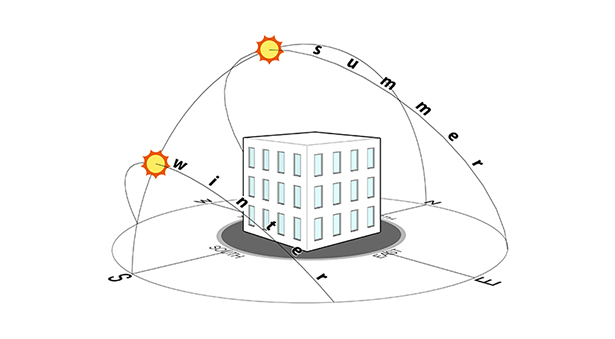Sunpath
Understanding the path of the sun is ancient and fundamental… and a lost art in contemporary construction. Even a rudimentary understanding of where the sun falls on a building at different times of the year can significantly improve its performance: reduced heating and cooling needs, reduced electric lighting, better daylight, more comfortable spaces, a more desirable interior environment.
Because of the sun’s changing path, the solar radiation received by different building surfaces is not all the same. In North America, the summer sun comes up far around towards the North, rises high overhead, and sets far around past West. In the winter it rises far to the South, climbs only partway up the southern sky, and then drops below the horizon before making it to West. As a result, the solar radiation received by the North, South, East/West, and roof surfaces of a building varies dramatically between orientations and from season to season. These variations are neatly encapsulated in the chart below (taken from Mazria’s Passive Solar Energy Book):
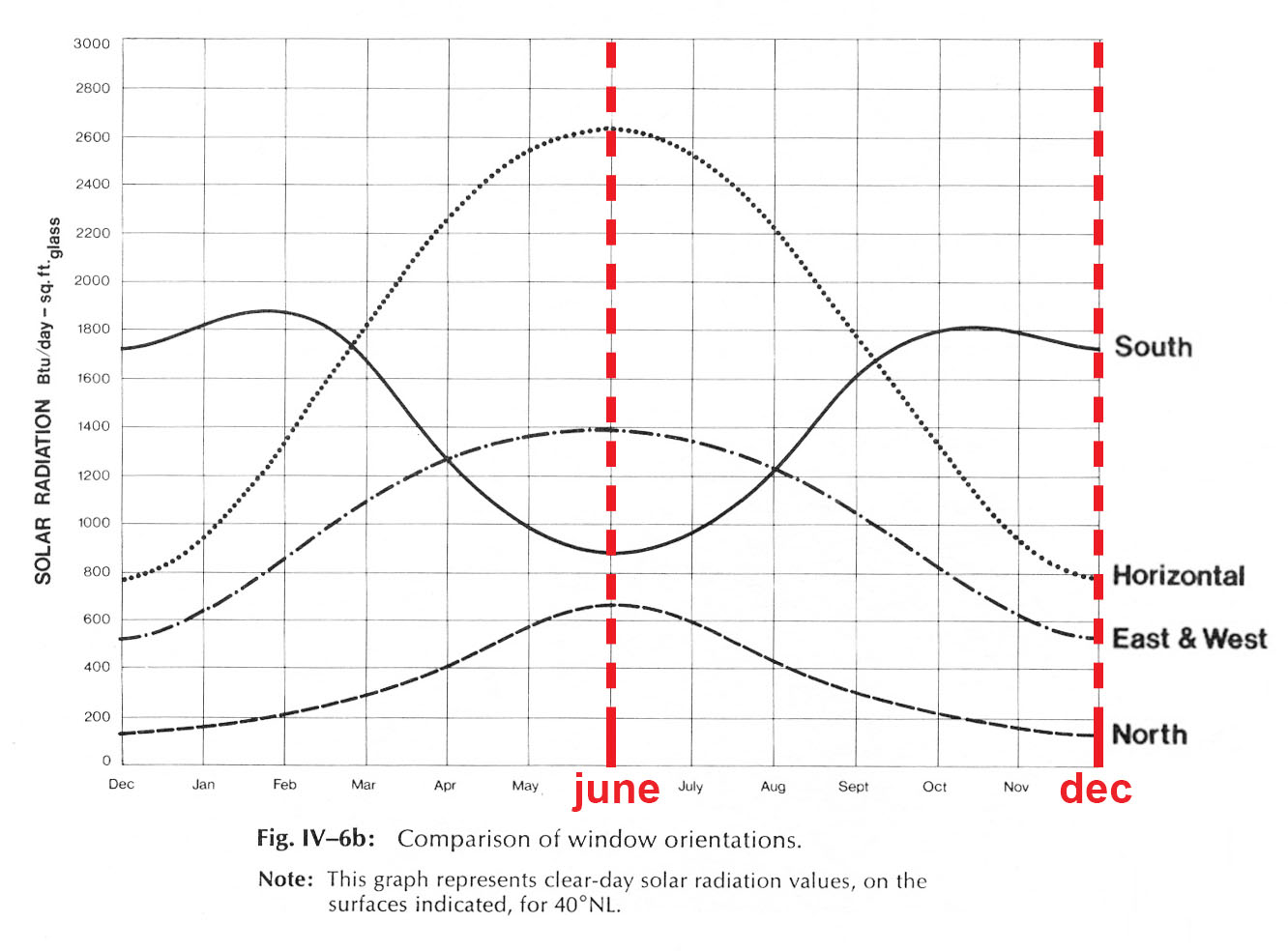
Solar Radiation by building surface and time of year:
By far the most solar radiation falls on a building’s roof in the summertime, followed by it’s East and West walls. The south wall receives little more than the north.
In the winter, by far the most solar radiation falls on a south-facing wall. Very little is received anywhere else. The south wall is the only surface that receives more energy in winter than summer. This is because of the low wintertime path it takes across the southern sky.
In most US climate zones the sun is an asset in the winter and a liability in the summer. Aligning the capture or exclusion of the sun’s heat with what is needed at varying times of year is the key. This can be done with overall building shape and positioning, or with the orientation of openings to desired directions. Simple, knowledgeable choices can be made from conventional options at all scales, from the largest city-planning decisions down to the choice of window shade.
At the scale of an individual building, three simple implications for the design of typical openings which emerge from the above include:
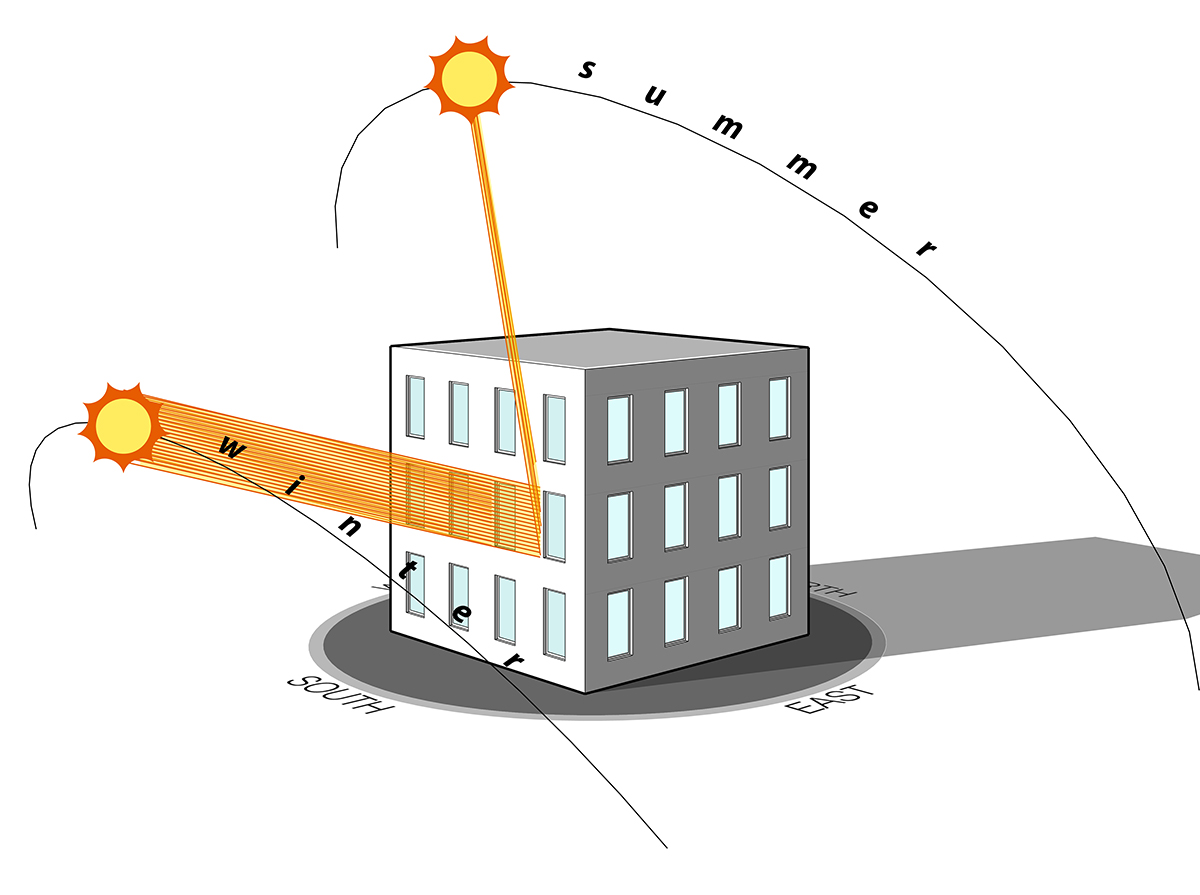
South-facing windows:
South-facing windows – the backbone of classic passive-solar design – work very well. They capture winter heat and avoid most of it in the summer. The summer sun that they do receive can be easily shaded by the wall above the window or with a small added overhang, or better yet captured and redirected heat-free as reflected light for the interior.
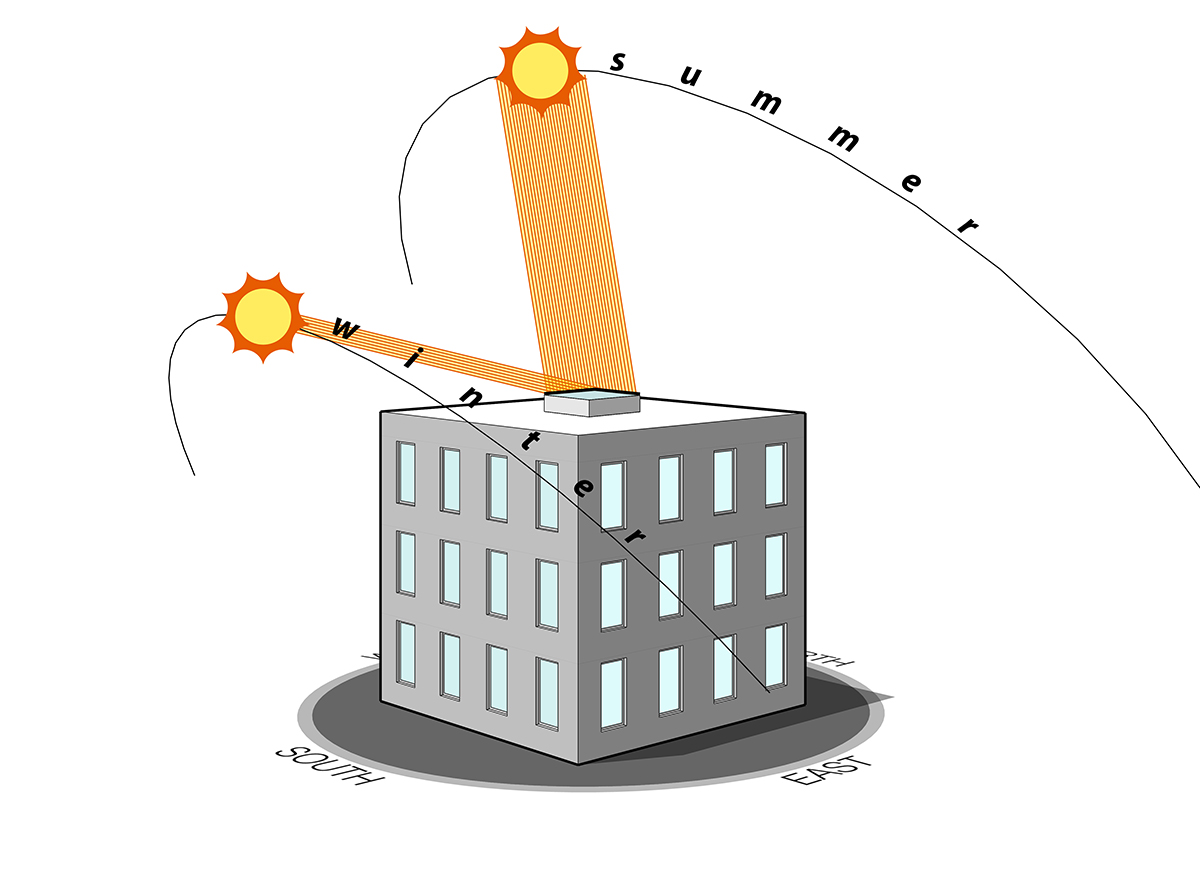
Skylights:
Skylights in flat roofs don’t work very well. Their orientation receives peak summer heat precisely when it is least wanted and miss almost all of what is available in the winter. They also create a large hole in an important part of the building’s thermal envelope – the roof assembly.
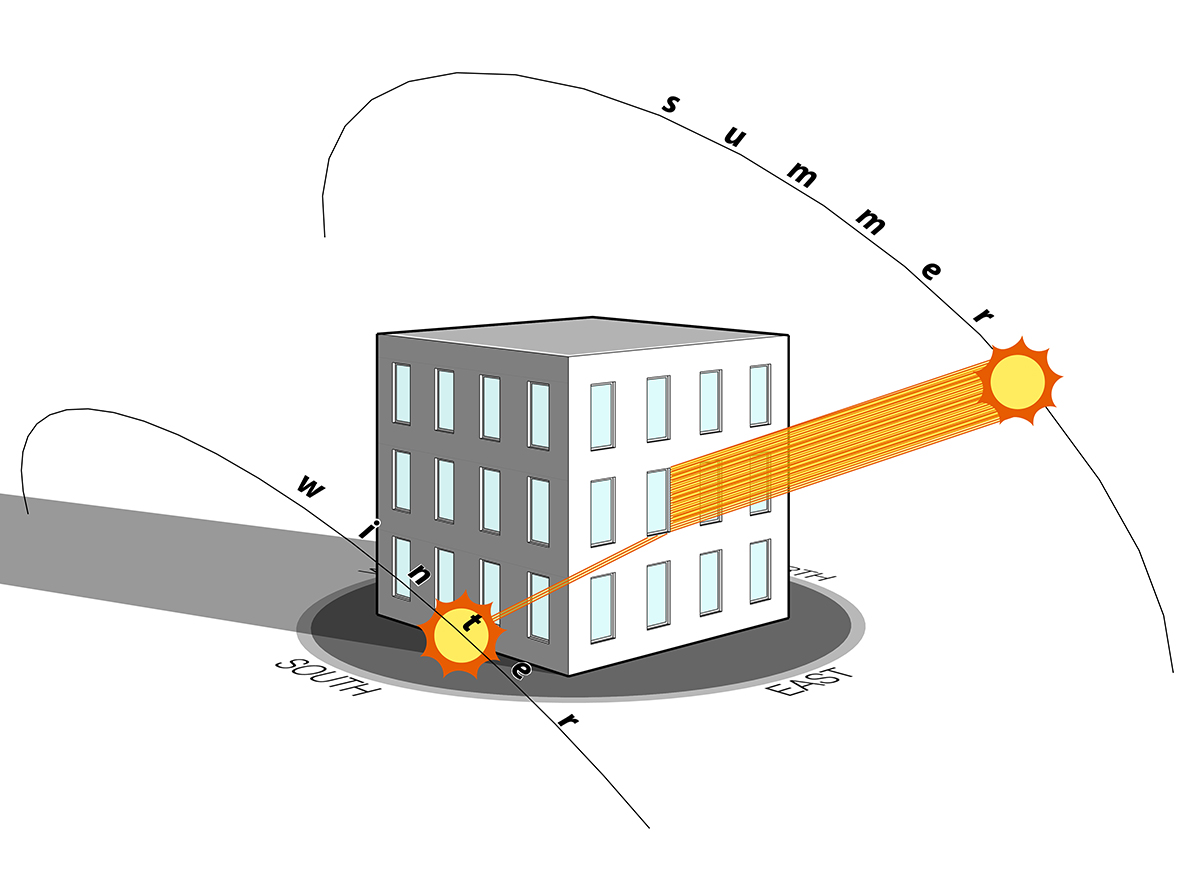
East and West-facing windows:
Large East and West-facing windows collect too much low-angle morning and evening sun in the summer to be be comfortable or energy efficient. They will benefit from vertical exterior shading to keep out heat.
Often a building needs to be shaped or opened in a direction that does not match the ideal. This can be resolved by combining or splitting apart openings into different orientations to fulfill different functions, or by using conventional openings in unusual locations. These tensions create opportunity for beautiful building design:
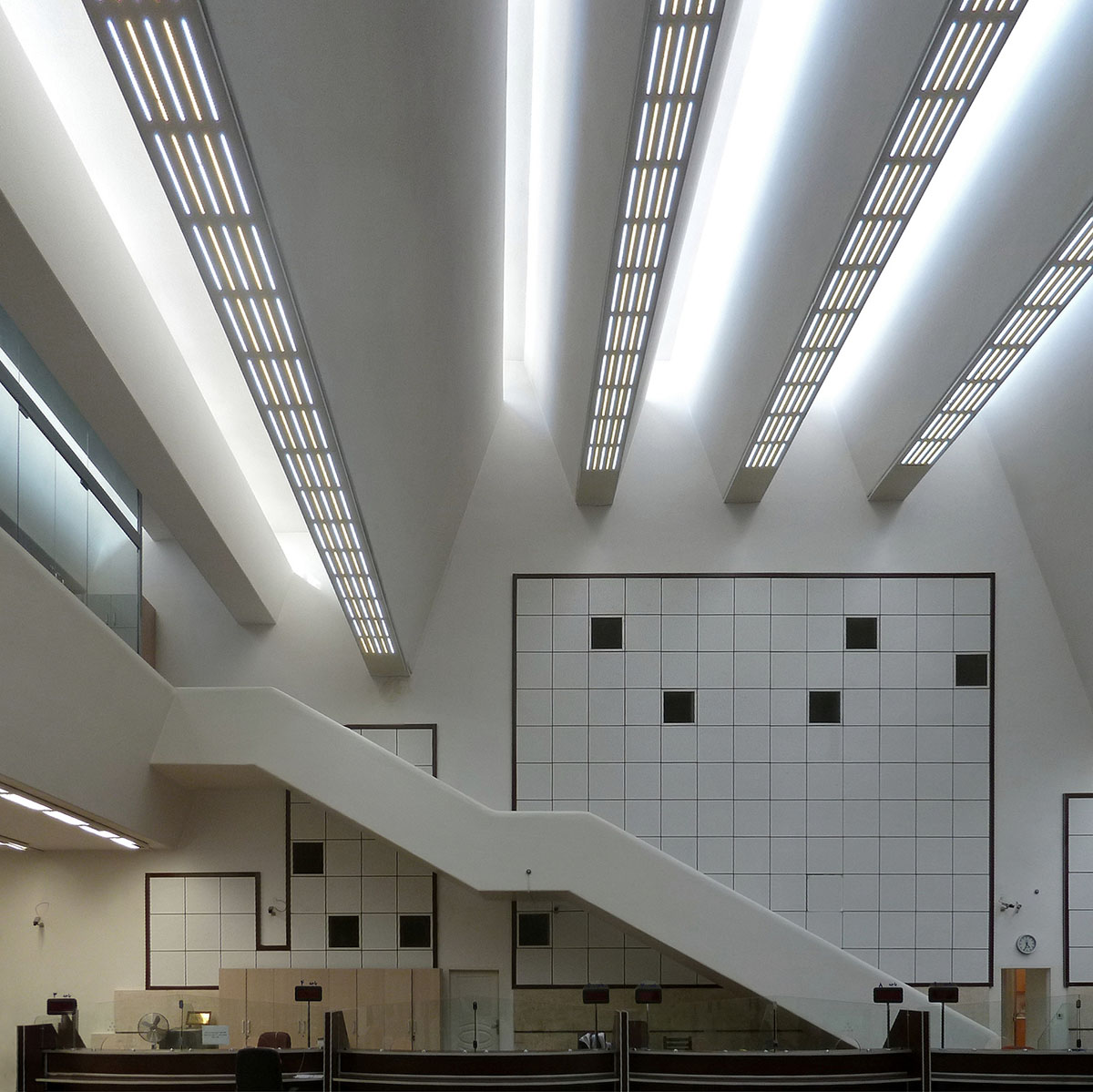
Clerestory windows:
When access to southern sun is blocked at ground level, overhead (clerestory) windows can capture south sun at the roof, allowing eye-level views in whatever direction is desired, or just bringing in great light when no view is possible, as in this example.
(Jorn Utzon’s Bank Melli in Tehran, Iran, where it is too hot to ever want direct sunlight. Photo: SEIER+SEIER)
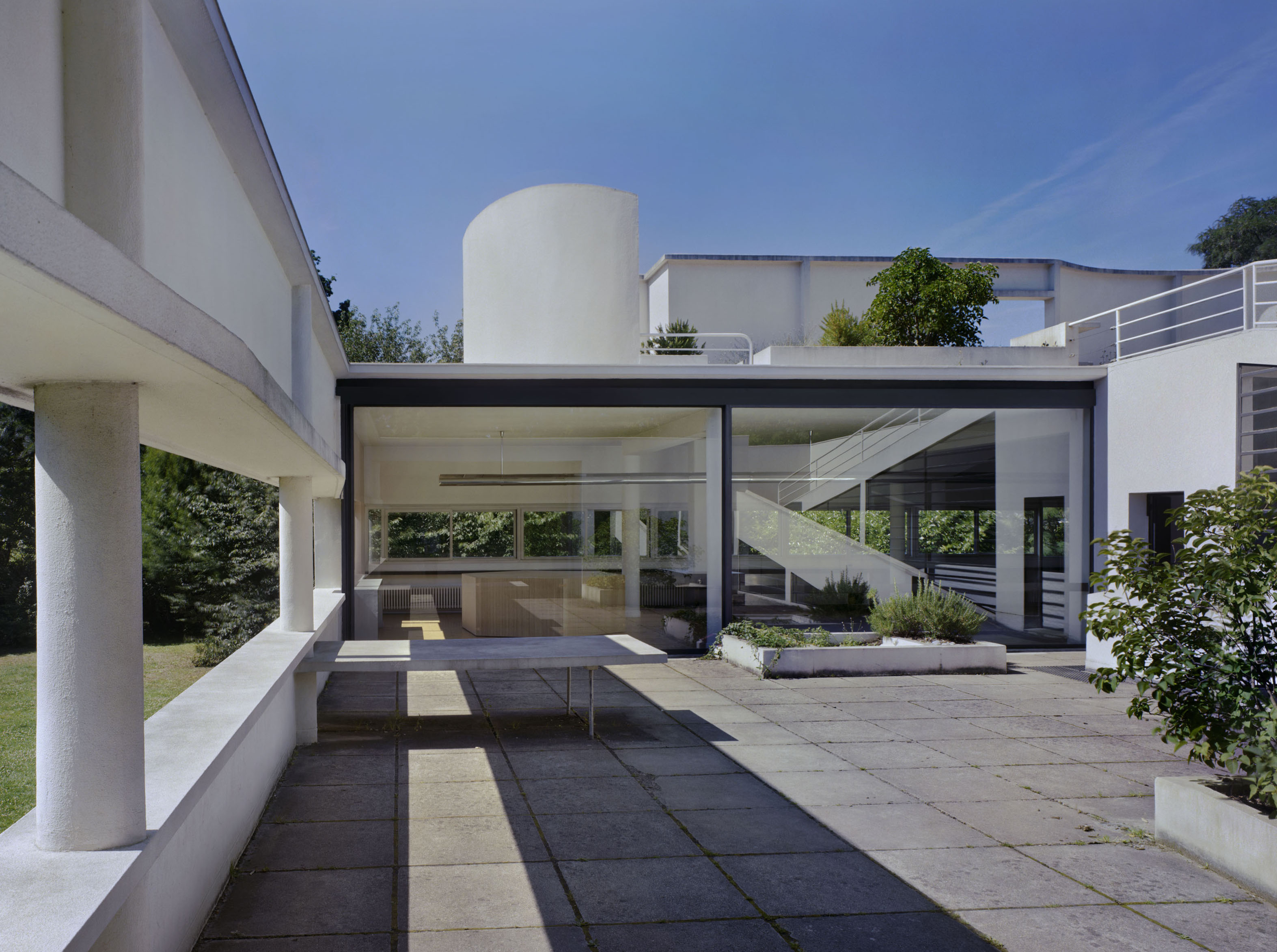
Different openings in different directions:
The living room of the canonical Villa Savoye opens inwardly to an elevated courtyard – counter intuitively and to wonderful effect – while the outward windows are his restrained “strips”.
(Le Corbusier’s Villa Savoye, Poissy, France, 1930)
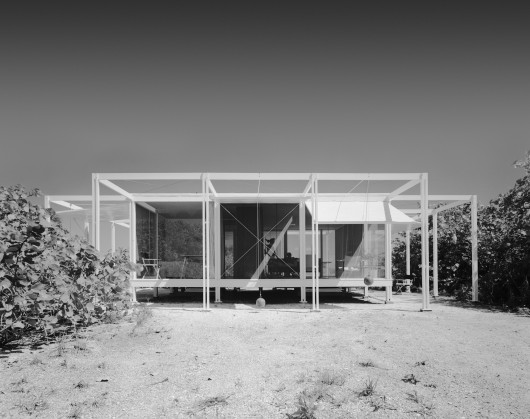
Exterior sunshades:
Adding exterior sunshades can address difficult low-angle sun from East and West, allowing views and daylight but keeping the sun’s heat outside.
(Paul Rudolph’s Walker Guest House, Florida, USA)
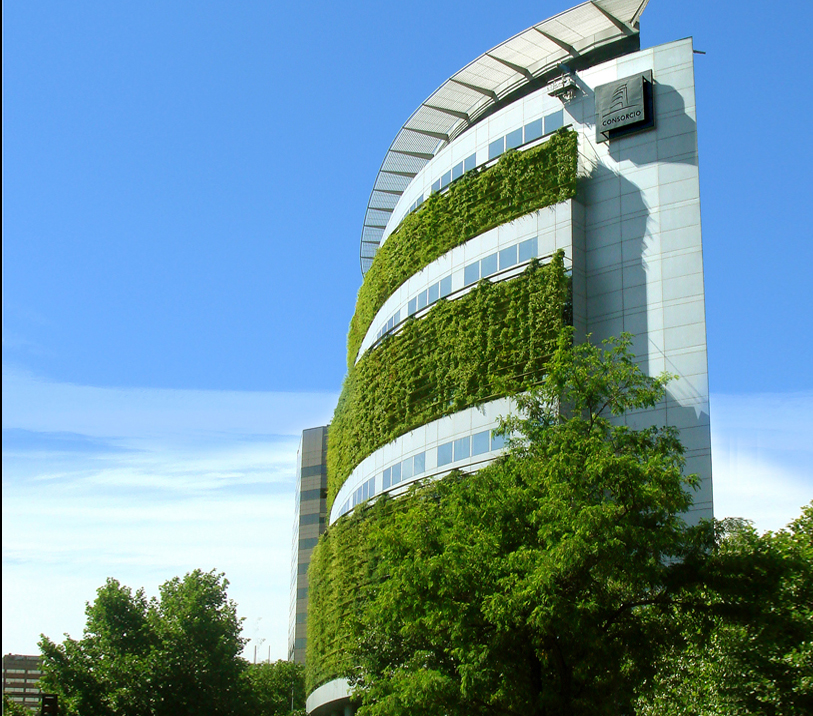
Vegetation:
Vegetation – either conventionally planted around buildings or more elaborately integrated onto facades – can work together with building design to synchronize sun with need. The upright orientation of trees and vertical plantings make them effective blockers of difficult low-angle summer sun, and deciduous plantings lose their leaves in the winter, letting in more light.
(Enrique Browne’s Edificio Consorcio, Santiago, Chile)
In my own architecture, work which directly responds to sun path includes:
Passive House Townhouse: the South-facing rear facade is opened wide to capture winter heat and sunlight. Exterior shades stop residual heat gain from high summer sun angles by shading the glass on the outside. The high summer angles allow wide louver spacing in the shades, which in turn allows daylight capture and inhabitants to see through to the outside, even when the shades are “down.”
Federal Office Renovation: Problematic heat gain and daylighting glare on Southeast and Southwest facade exposures are addressed with deep exterior lightshelves to shade low sun angles and reflect daylighting to the office ceiling.
